I’ve been using a small 1U server (Running an E3 V2 CPU) to run Blue Iris for a few years now, and in an attempt to find power savings in my electric bill (and subsequent AC savings too) I decided to do some digging for a replacement. I gathered some metrics on the old server and found it using 80-100 watts, so I was aiming to reduce that by 50%. I ended up finding a cute little 2 bay “NAS” online that supports a low power AMD CPU and can handle the HDD space I need for the video recordings.
Meet the Aoostar R7, a small AMD powered mini-pc style machine. It has quite the port selection on the back, and can support 2 x 3.5in HDDs and an NVME boot drive. It even has dual 2.5G ethernet ports which is a nice bonus even if my network doesn’t yet support that speed.

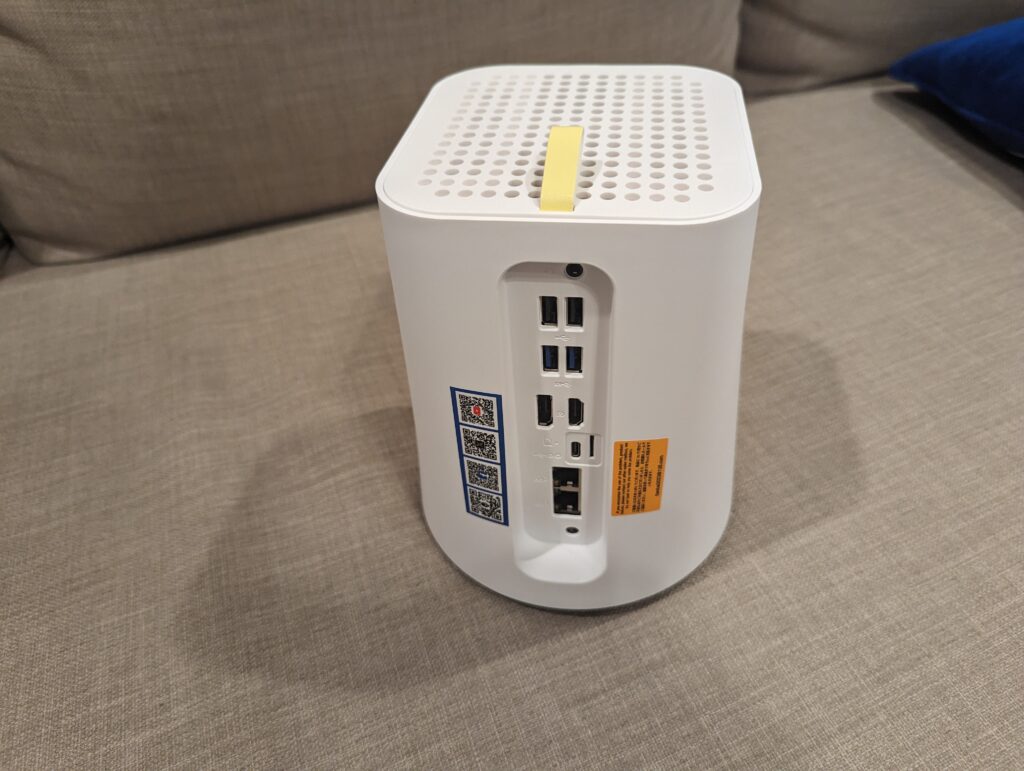
HDD Installation
The manual included with the machine is minimal at best, and a bit misleading. In the images showing how to remove and add a HDD to the unit, it implies that you need to remove the entire system from the case, by first removing the 4 screws from the bottom of the machine. This is not the case, while the hard drive trays are tight, and take a bit of elbow grease to remove, they don’t require you do disassemble the entire machine.
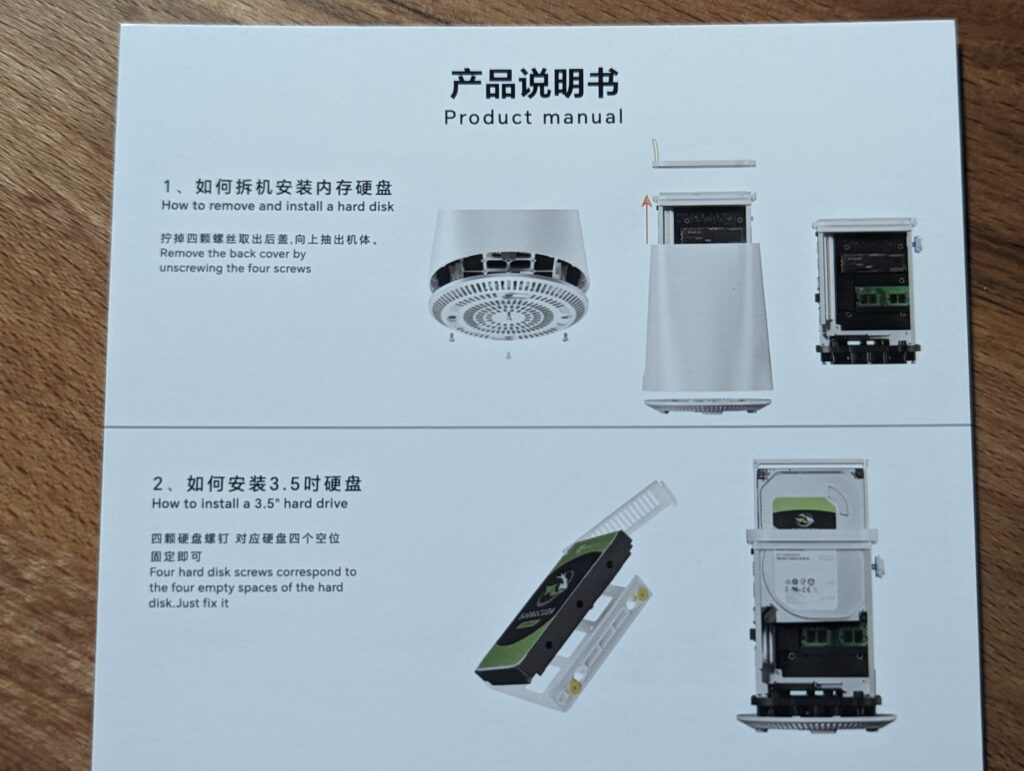
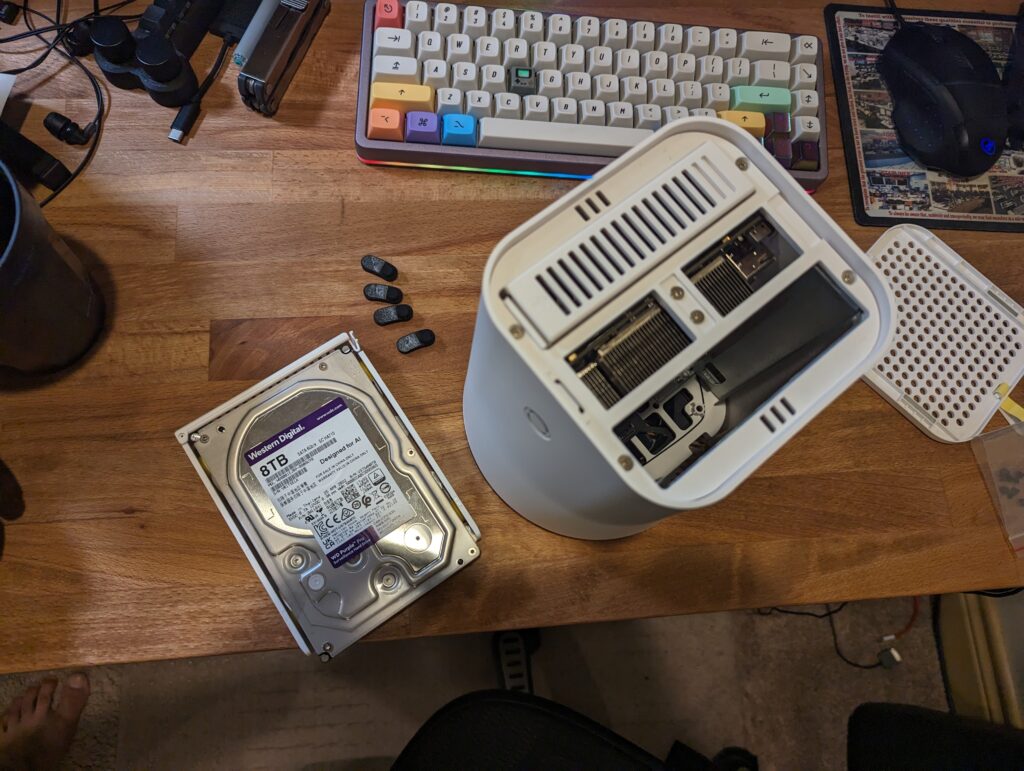
Disassembly
Disassembly is easy on this machine, although I am a tad annoyed that the screws are underneath the feet on the bottom of the machine, and those feet are stuck on with double stick tape. If you open up the machine too many times (which is likely over the years), you will more than likely also need to replace the tape on the bottom of them to keep the feet attached.
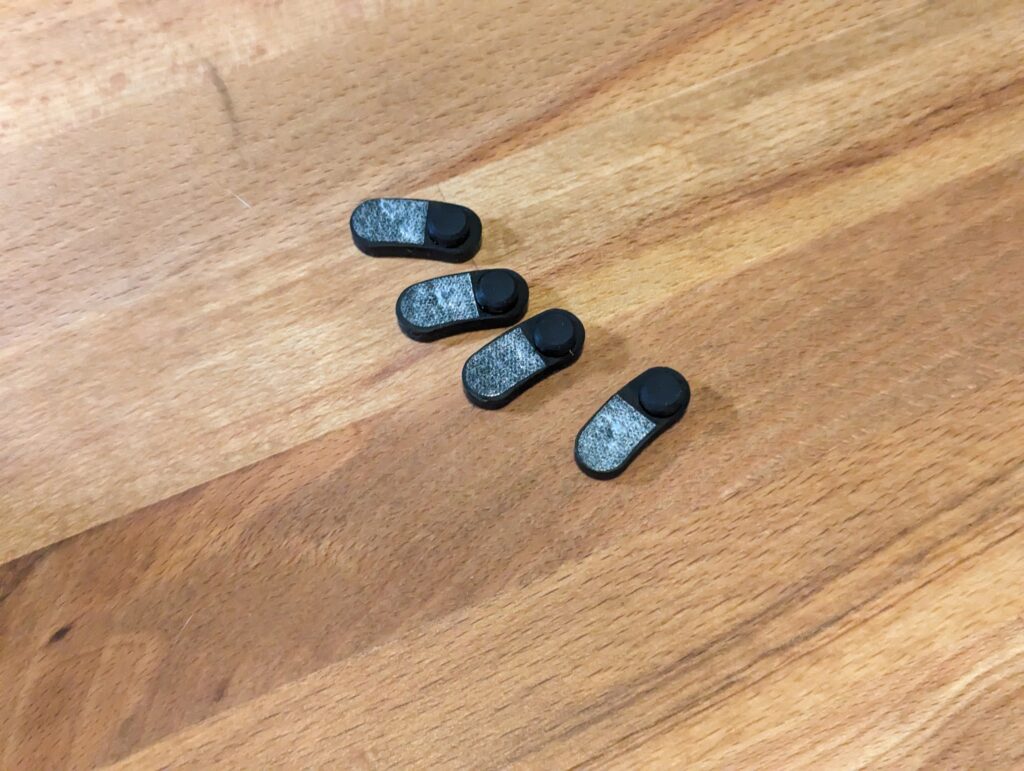
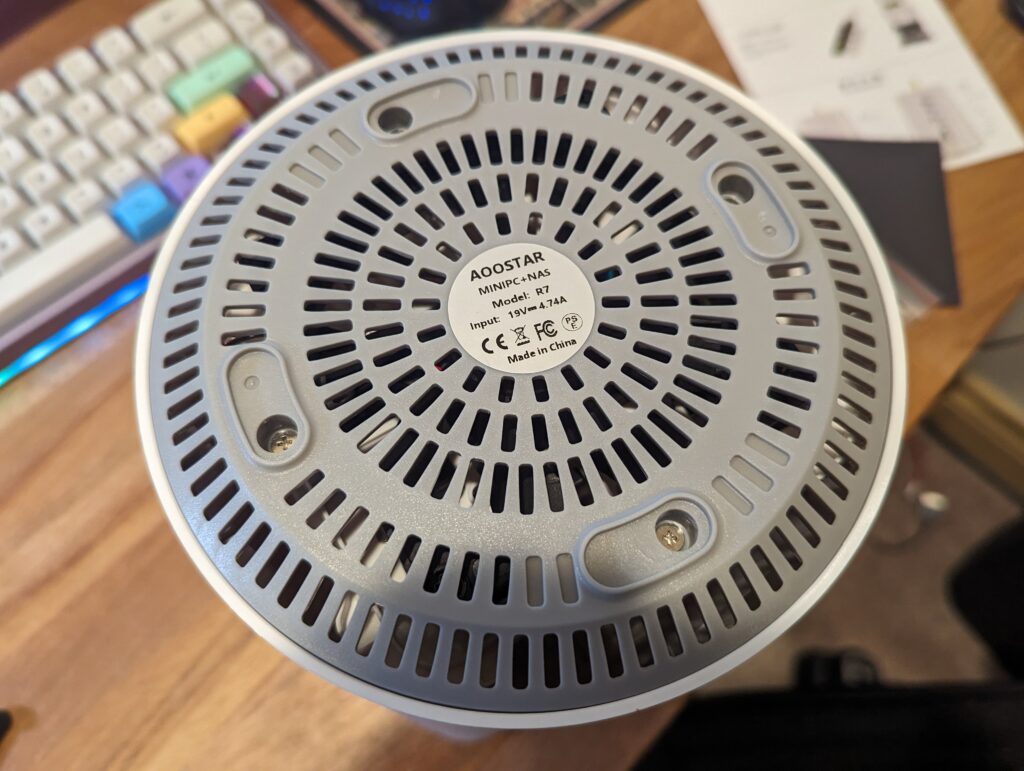
The entire machine is sandwiched between the two drive bays, with a small fan for the CPU, and a larger fan providing airflow to the entire machine from the bottom.
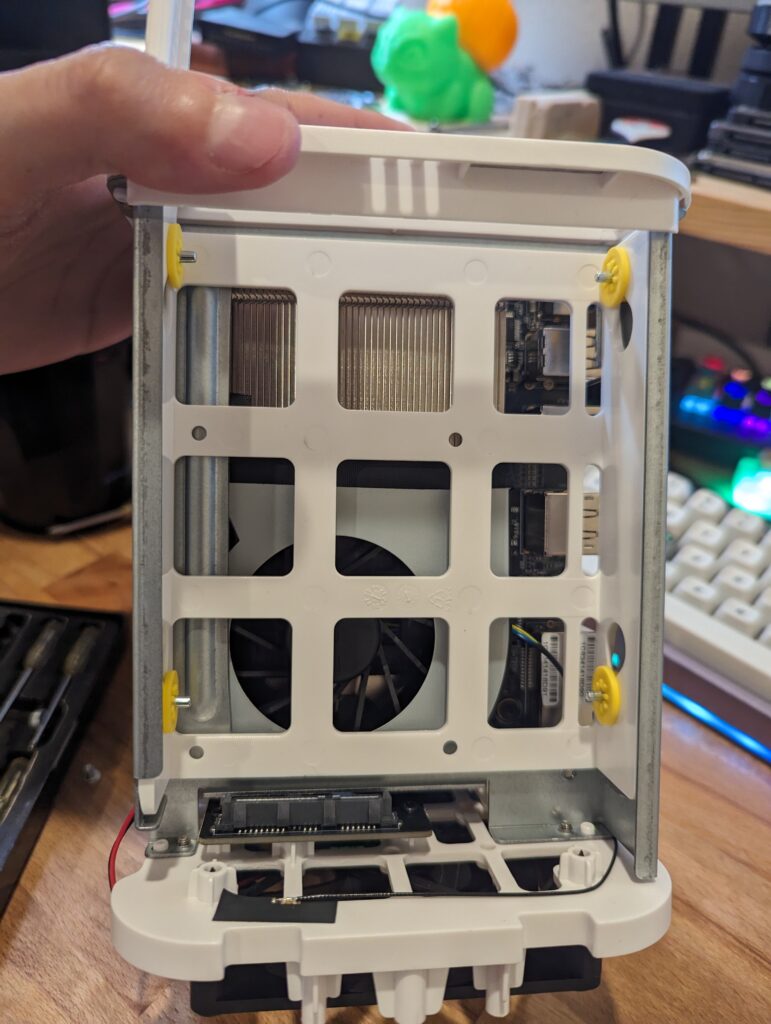
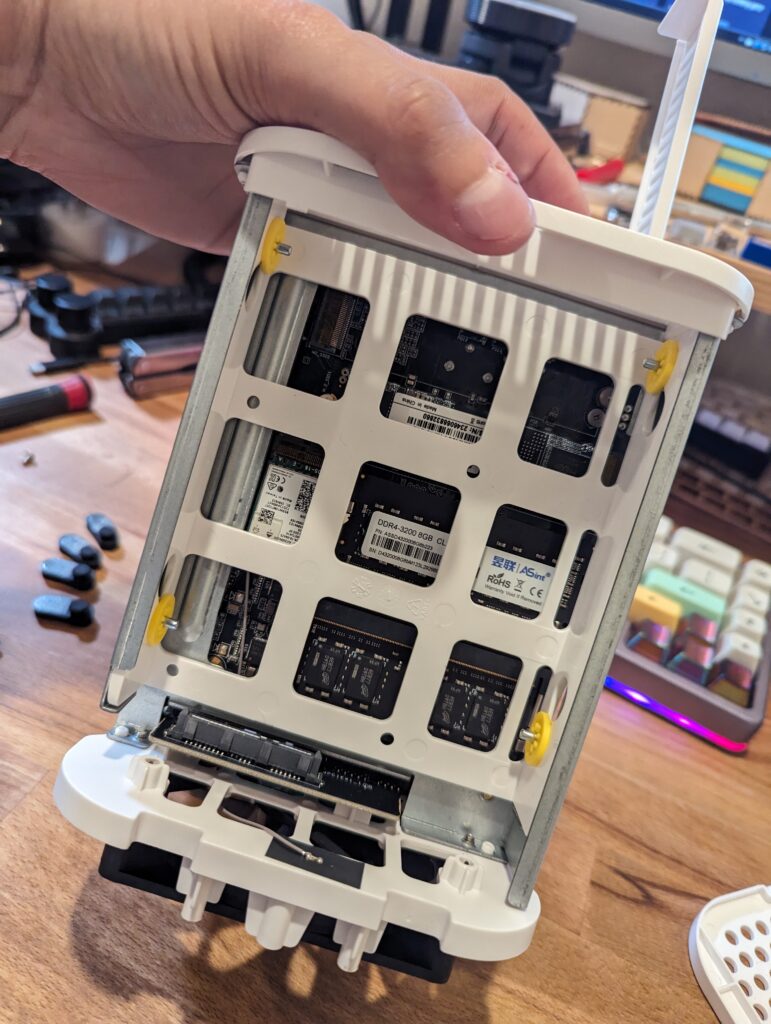
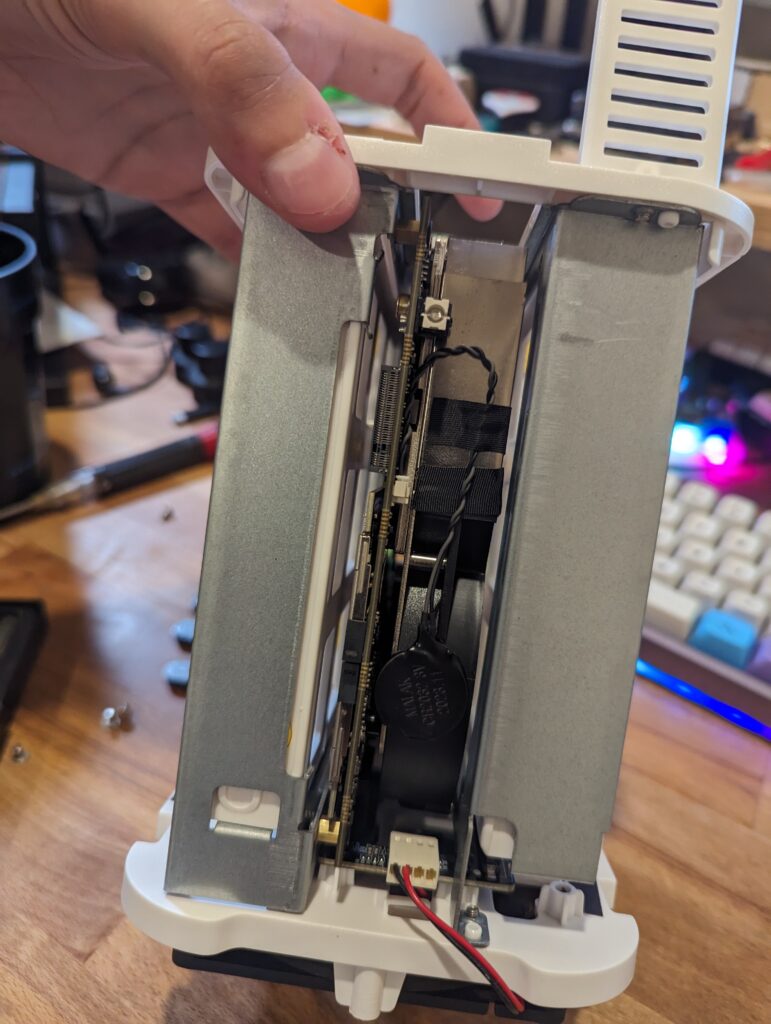
Performance
This new machine now runs Blue Iris at SIGNIFICANTLY less CPU usage, power draw, and fan noise. I know mainly just hear the HDD chirping away instead of jet engine fans from the 1U server I was using before. Of course the power draw from the wall is less as well, that’s what comes with 10 years of CPU development, but I was still surprised to see the power draw drop by 75%.
My Blue Iris setup is much simpler than most, its just recording 5 cameras 24/7, no motion detection, no AI, nothing else. I had found with the old machine that these features were too CPU hungry and would cause me to lose footage (motion detection triggering the recording well after the motion started and the like). With this new machine though, these may be in the realm of possibility again.
| Stat | R7 5700u | RDIR-1G |
| CPU Usage in Blue Iris (5 x 1080p cameras just recording) | 10% | 40% |
| Power Usage (Watts) with the Blue Iris UI Open | 25W | 80-100W |
Conclusion
This little machine has been running like a champ for a week or so now, and I’m very happy with it. The minimal power draw means I can probably just move it into my network closet too. Its quiet, and is performing exceptionally better than the previous server was. I can leave Blue Iris open without worrying about the system turning into a jet engine, and it keeps up well with the processes too. Overall would recommend it for your mini-pc-supporting-3.5in-disk-needs!

